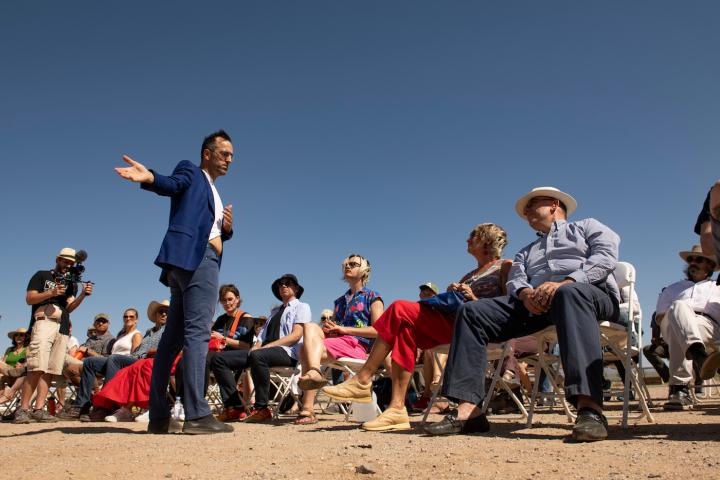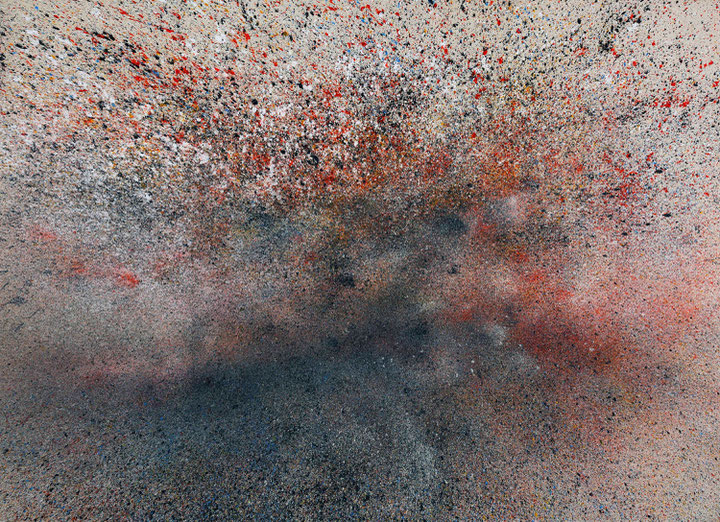“All attempts to render politics aesthetics, end up in war.” – Walter Benjamin
The bullet is propelled at the horizon, the point of the bullet penetrates the air reaching the target in microseconds, generating a poetic scene of destruction that will produce something. The bullet obliterates color-filled vials. Paint explodes from the site and hits the canvases like stains of blood, a chaos of violence recorded in abstract shapes of color. A new visual narrative is created over raw canvas. The resulting image turns the gun into an instrument of art production. The supersonic bullet leaves a sound of silence and the visual chaotic gestures become the painting.
Starting in the 1950s, and for the two decades following, the CIA secretly promoted the work of American Abstract Expressionists around the word as a tool of propaganda. The United States was promoting the ideal of individual freedom, where artists could express themselves through their work without limitation. The work of Abstract Expressionists was seen as revolutionary. With the perspective of time and history, it is understood that artists were also used as powerful propaganda instruments of capitalism.
“In the propaganda war with the Soviet Union, this new artistic movement could be held up as proof of the creativity, the intellectual freedom, and the cultural power of the US. Russian art, strapped into the communist ideological straitjacket, could not compete.”1
Yet Abstract Expressionism didn’t align with the expectations or artistic tastes that policy leaders in the United States held dear – President Harry S. Truman was openly hostile to the new modernist creations lewdly stating that, “If that's art, then I'm a Hottentot.” The new American art was promoted under a policy known as the “long leash” in which the artists functioned as weapons of Cold War propaganda.
I use a weapon to mark the canvas. The paint become a stand-in for blood. The result of my art is an echo of the relationship between Cold War policy and artistic production – art, chaos, and violence. As a shooter I have control over chaos, but there is always room for the accident. I’m the marksman. I’m good at shooting. I will shoot the targets, and I will control the destiny of these bodies, (the vials of paint) to create a new aesthetic gesture over raw canvas. Jackson Pollock asserted, “I will leave no space for the accident.” I, the soldier/artist will control the weapon in an act of creation to reveal a history of violence. How powerless are those bodies when it comes to this mode of production?
This instrument I hold makes a new propaganda, a propaganda that aestheticizes the chaos of war to reveal the war’s carefully erected ideological scaffolding.
1 https://www.independent.co.uk/news/world/modern-art-was-cia-weapon-1578808.html
“Good at Shooting, Bad at Painting” was commissioned by the Museum of Contemporary Art Tucson. Video footage of the event that took place on May 12, 2018 can be found at:
https://www.youtube.com/watch?v=mLDpW-RZCHM

